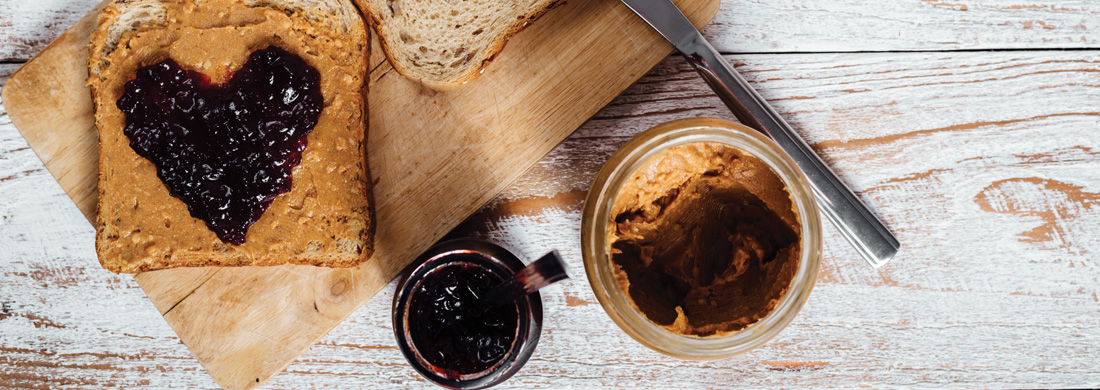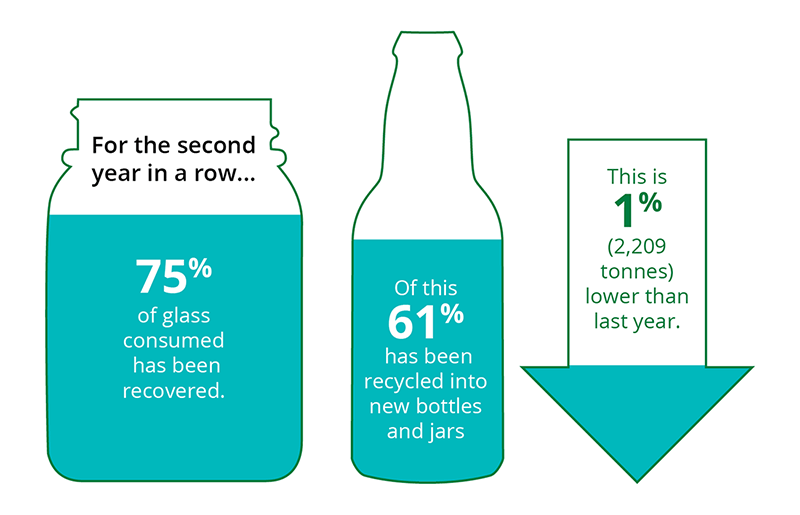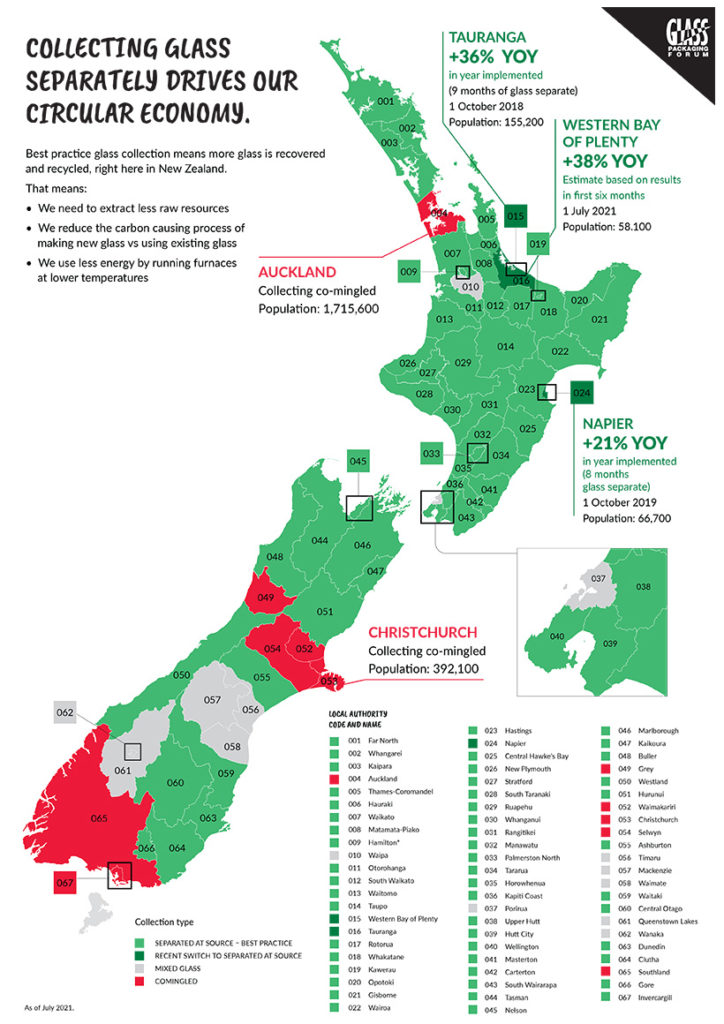
Glass Packaging Forum annual report lays out NZ’s glass recycling performance
Glass bottles and jars continue to be one of, if not the, most recycled products in New Zealand.
This according to the Glass Packaging Forum’s (GPF) recently released annual report which noted a recovery rate of all glass bottles and jars sold in New Zealand of 75%. This is the second year in a row this recovery rate has been achieved, says GPF Scheme Manager Dominic Salmon.

Room for improvement
“While this recovery rate is high compared to other countries, our target is over 80% by 2024,” he says. Dominic also noted that 61% of the recovered glass is recycled back into new glass containers in New Zealand, down 1% on the previous reporting period.
Barriers to a higher recovery rate:
- Co-mingled collections
- Variety of collection practices and systems
- Network infrastructure and resilience challenges
Barriers to a higher recycling rate:
- A handful of councils send glass to alternative uses as the main outcome
- Contamination and quality issues at various points in the system – half of councils responding to our survey report this as an issue
- Dependence on demand for New Zealand-made glass from the manufacturer
Glass collected in New Zealand is recycled in New Zealand – an example of the circular economy in action, he says.
Systemic change needed
The GPF operates the country’s only voluntary product stewardship scheme for container glass and represents the majority of the industry. Getting to over 80% recovery and improving the recycling rate will only come from shifting the scheme to a regulated model, Dominic says.
The GPF has asked Government to enter a co-design process for a regulated scheme for container glass.
“We can still make improvements under a voluntary model, but they will be incremental. We believe a regulated stewardship scheme, fully funded by industry, is the way forward if we are going to substantially improve glass recovery and recycling,” he says.
Funding glass recovery
According to the report, which covers the 2020-2021 period, the GPF awarded over $237,000 in funding to 15 projects which improve glass recovery, recycling, reuse or alternative uses. Collectively these projects had a positive impact on some 11,500 tonnes of glass per year, Dominic says.
“Funding refillables projects was a priority and were pleased to help New Zealand cosmetics company Aleph with its refill scheme for glass packaging.” Funding comes from voluntary levies paid by GPF members.
Best practice becoming standard practice
The GPF has been pleased to see an ongoing shift among councils away from co-mingled (everything in one bin) recycling collections to glass separate collections. This included one of the biggest, Hamilton City Council. Our feedback from councils and the waste industry shows this leads to higher volumes of glass being recovered with lower rates of contamination.
“To date, 79% of councils use a collection method where glass is separated at source. However, only 49% of the total population is served by them due to the continued use of co-mingled collections by large councils,” Dominic says. “We will continue to work with councils to help them transition away from this method, which requires more sorting and results in greater loss to landfill.”
Improved data
The GPF once again had its data sources and methodology reviewed by independent consultants, Grant Thornton. “They found we are using the best currently available data to produce a picture of how much glass is consumed each year, how much is recovered and what the outcomes are,” Dominic says.
Councils around New Zealand were an important source of data with the majority completing a survey on how much glass was recovered and what happened to it, as well as what obstacles they face. “Contamination was noted as the biggest obstacle and is something we’ll continue to focus on through our funding, advocacy and advice,” Dominic says.



